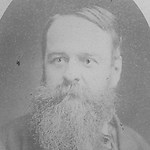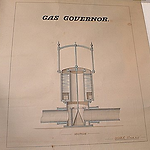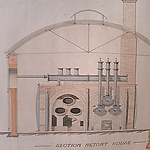Person
Courtis, Henry (1829 - 1883)

Henry Courtis
Details
- Born
- 8 August 1829
Lunnon, Wales - Died
- 29 August 1883
Melbourne, Victoria, Australia - Occupation
- Chemical engineer
Summary
Henry Courtis was a gas engineer who supplied Bath's Hotel in Ballarat with gas made from gumleaves in the late 1850s. He also designed and constructed gas plants in:
Victoria - Ballarat, Albury, Talbot, Prahran, Clunes, Wagga Wagga, Daylesford, South Melbourne, Horsham, Echuca, Creswick, Brighton, Footscray
Western Australia - Perth
Queensland - Ipswich
New Zealand - Timaru, Oamaru, Dunedin, Christchurch, Hokitika, Gisborne, Wellington and Napier
Courtis and his wife Sarah Anne Burall (1817-1882) spent much of their married life living in Victoria's Warnambool, Ballarat, and Castlemaine districts. Their two sons also worked in the gas industry and managed the New Zeland plants in Dunedin and Timaru respectively
Details and images supplied by John Courtis.
Published resources
Books
- Bate, W. A., The Lucky City: the first generation at Ballarat, 1851-1901 (Melbourne: melbourne university Press, 1978), 302 pp. Details
- Proudley, Ray, Gas in Ballarat: an Illustrated History (Melbourne: Gas and Fuel Corporation, 1985), 43 pp. Details
Resources
- 'Courtis, Henry (1829-1883)', Trove, National Library of Australia, 2009, https://nla.gov.au/nla.party-1473307. Details
See also
- Academy of Technological Sciences and Engineering, Technology in Australia 1788-1988, Online edn, Australian Science and Technology Heritage Centre, Melbourne, 3 May 2000, http://www.austehc.unimelb.edu.au/tia/index_c.html. Details
Digital resources
Rosanne Walker
Created: 25 May 2001, Last modified: 4 June 2010
- Foundation Supporter - ARC Learned Academies' Special Projects


